 |
| Sylvia Plath |
Sylvia Plath: reflections on her legacy
The Bell Jar was published less than a month before Sylvia Plath killed herself on 11 February 1963. To mark the 50th anniversary of her death, writers and poets reflect on what her work means to them
Lena Dunham
My focus through most of college was "confessional female poets" with an emphasis on those who had committed suicide. Although I firmly catalogued myself as "anxious but not depressed", I was inexorably drawn to the work of women who existed on the lip of a complete and utter nervous breakdown. I could only begin to imagine the pressures that weighed on Sylvia Plath (child rearing, marital distress, bitter London cold) but her work had a normalising effect on my emotional life and her use of language in her poetry and prose, rhythmic, angry, injecting volatile emotion into a myriad of SAT words, rang in my head as I walked to class or drifted off at 4am.For a "free form" class project in senior year I did a quiz show-style performance piece based on her life ("Ted Hughes cheated on Sylvia Plath: True or False?") and my final paper in my 20th-century Poetics class compared her work to that of Alanis Morissette ("Angry Girls: Alanis and Sylvia face off"). I had a recording of Sylvia reading her poem "The Thin People" that occasionally came on when I put my iPod on shuffle, abruptly bringing any party atmosphere to a halt.
I wonder if Plath would have been saved had she been born in a different time: in a time when psycho-pharmacologists are no more shameful to visit than hairdressers and women write celebrated personal essays about being bad mothers and cutters and are reclaiming the word slut. Would she have been a riot grrrl, embracing an angry feminist aesthetic? Addicted to Xanax? A blogger for Slate? Would she, like me, have found a cosy coffeehouse environment on the internet, a way to connect with people who understood her aesthetic and validated her experience? Would she have been less dependent on the approval of viewers and critics and more aware of the positive effect her book was having on splintered psyches and girls with short bangs everywhere? Or would that kind of connectedness and access to unmitigated and misspelled negativity have driven her even madder?
I asked my Twitter followers, many of them women with histories of angst and an ability to speak eloquently and even comically about it, to spare 140 characters on the topic of The Bell Jar and what it meant to them.
"All the pages fell out of my copy, the book literally lost hope & gave up on itself," said one. "This irony is not wasted on me."
"I read it right before senior year & loved it so much I thought I was going crazy too. Laid in bed for three days just to be sure."
My favorite response was a simple "it made me feel less alone." Because that's how it made me feel, too. And that's what I think art is for. Sylvia was just like us. Only she didn't have The Bell Jar.
Lena Dunham is the creator of Girls
Jacqueline Rose
In recent discussions of The Bell Jar a number of things seem to me to go missing.
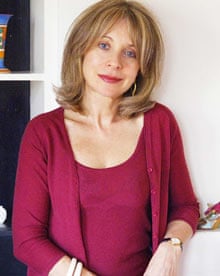 |
| Jacqueline Rokse Photo by Sarah Lee |
First, this was Plath's foray into popular fiction. Writing for the popular press was as much her ambition as "high" art. "Either Kafka lit-mag serious or SATEVPOST," she wrote in her journal in 1957, when she was already writing the poems to appear in her first published collection: "Try both styles: do it to your heart's content." At moments, she sounds like an advertising copyist for Mills & Boon. "I shall write a complete fantasy life of tearful-joyful stories for women," again in her journal in 1959, "tremulous with all variety of emotion."It is therefore my hunch that she would have loved the most recent cover of the book that has provoked such indignation.
Secondly, if the book is important, it is because it weaves its brilliant depiction of the tortuous professional and personal life of a young would-be female writer into the landmark events of 1950s America – the novel opens with the execution of the Rosenbergs. The personal diagnosis is therefore part of a much wider political malaise. For that reason alone, the tendency to read The Bell Jar as if it were the unmediated biography of Plath's personal life seems to me to diminish its significance. Why do readers of her work always reduce it to her biography, thereby cheating her as a writer, cheating any writer, of the power to transform their lives in their art?On this too, The Bell Jar has a story to tell. In 1987, Jane Anderson brought a legal suit against the 1976 film of the book for its portrayal of her as a character, Joan Gilling, a friend of the narrator who makes a lesbian pass at her and commits suicide near the end of the book. Although she was finally given a financial award, her case was remarkably weakened by the fact that, as the defence argued, her objections to the representation as untrue simply confirmed that the book was fiction not fact (clearly she had not committed suicide). It is of course a tragedy that it would seem libellous to an American woman in the 1980s to be portrayed as a lesbian. But it should also help us to be cautious, to remember that Plath was above all a writer, who plucked the best and worst of her own inner and outer landscape and transformed them through her art to create what remain some of the most important poems, and one of the most important pieces of fiction, by any woman writer of the last century.
Lavinia Greenlaw
If I opened a novel now and it began with the line: "It was a queer, sultry summer, the summer they electrocuted the Rosenbergs …" I'd close it again fast. Not only does it sound strenuously staged but we've seen an awful lot of this kind of thing since 1963. Plath can be a terrible influence. We imitate her without having a clue about the technical genius that makes her work such a force.
The Bell Jar has stayed with me from first reading as a world both terrible and formal, crazy and clear. I go back to it as a model of how to write from deep within the self while being properly and ruthlessly artful. On that first page we meet Esther Greenwood, whose thoughts start in an ordinary place – the weather, the news, jobs, clothes, boys – and then heighten and fix in images as brilliant and exact as any in Plath's poems. Yet Esther still sounds like any young woman bumping from work to parties to home "like a numb trolley-bus" while "all the little successes I'd totted up so happily at college fizzled to nothing …" We're watching someone start to tip, a moment Plath explored again and again. It forms in her poems like ice. The Bell Jar has just the same crystalline inevitability.
Ruth Fainlight
Sylvia and I met at the presentation of the 1961 Hawthornden Prize by its then holder, Alan Sillitoe, to the new recipient, Ted Hughes, each man accompanied by his wife. We were two young Americans, barely acknowledged poets (although she had already published a first collection, while I had to wait a few more years for mine), and married to charismatic and successful English writers.
My first impression was of a burningly ambitious and intelligent young woman trying to look like a conventional, devoted wife. She wore a small hat and a tight-bodiced, full-skirted shiny dark green dress – like one of my New York aunts dressed for a cocktail party. There was something almost excessive about that disguise. But afterwards, when someone suggested we stay together a bit longer and go for a drink, she and I exchanged a glance of acknowledgement as "spirit-sisters". Sadly, circumstances gave only few occasions to confirm this; they were about to move to Devon. In the weeks before they left, we met a few times and the friendship between the four of us deepened. We promised to visit them as soon as possible.In fact, it was not until the next spring, when both of our sons had been born, that we drove there for a weekend visit. My most vivid memory of those few days is of the afternoon spent picking daffodils with Sylvia. To one side of the house a large grassy bank, covered with daffodils at this time of year, sloped down to the lane. Energetic and practical – they were not earning much money then – she had arranged with a local florist to supply as many as she could. Several long brown cardboard boxes and a pile of tissue paper lay on the grass nearby, and Sylvia explained how to cut the stem at a certain point, lay the required number in the box, then cover the flowers with paper. She worked much faster than me. I tried to keep up, but after a time could not bear to look into another one of those yellow trumpets crammed with sexual organs: Nature was giving me the horrors. She laughed and told me to stop.
It was another afternoon when we sat in her study, each holding a baby on our laps, and talked about what we were writing. She showed me her latest poem and said that she wanted to dedicate it to me. The poem was "Elm"; perhaps the most thrilling dedication of my life.
Lisa Appignanesi
I think I first read a poem by Sylvia Plath at the same time as I learned of her death. The latter seemed to me unremarkable, perhaps because I had never heard of her or because death was more common than poetry. The poem, however, was something else. I can still see its layout on the magazine page - Time or Newsweek. "Daddy," it blared, "I have had to kill you."
The poem's rhythms, that potent blend of nursery rhyme and ragtime, still thrum through me: "You do not do, you do not do/Any more, black shoe" rhyming daringly at the stanza's end with "Achoo".
Shakespeare aside, the only poetry I knew back then was all about trees, daffodils, clouds, bean-rows, or statues in desert places. Few of these seemed particularly resonant in my urban life. But here on the page by this woman called Plath, was a powerful drama whose matter and language I recognised: the German tongue, the Polish town, the Jew, the boot in the face, "the brute heart of a brute like you"… Later, as I grew up, I realised that I had been dimly aware of more, too: the generational tugs, the hauntings, the fact that women inflect experience differently from men, not to mention that whole area of what Al Alvarez has called "big, dark feeling".
Two slim volumes of Plath sat on my shelf when I first came to Britain. They spoke far more than their size and ever more loudly. They grew to three with The Bell Jar, the first novel I had ever read which ventured into a psychiatric institution. By some accident of time and place, I met people who had known Plath and who told stories of her vivid presence as well as of the tragedy of her suicide, in part occasioned by a toxic cocktail of anti-depressants she was allergic to. When I came to write my history of women and the mind doctors Mad, Bad and Sad, Plath's story played its part: her journals are a resonant source.Haphazardly this morning, I thought I'd type her name into YouTube. After all these years, for the first time I heard Sylvia's voice. It's a beautiful voice with its educated, New England lilt of a kind that barely exists anymore. It's also lucid, articulate, strong, and witty as she talks of how prose allows you to include more of the detailed experience of life, those "toothbrushes" you can't put into poety. And there she is reading "Daddy" – Kapow!
Mad, Bad and Sad: A History of Women and the Mind Doctors from 1800 to the Present is published by Virago


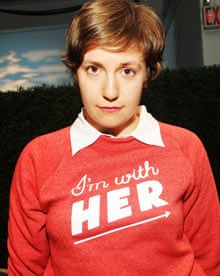
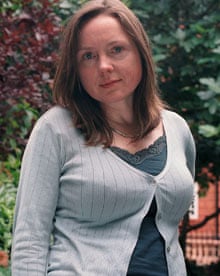
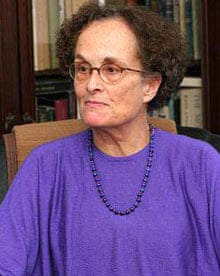
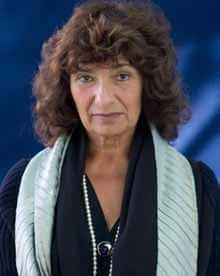

No comments:
Post a Comment